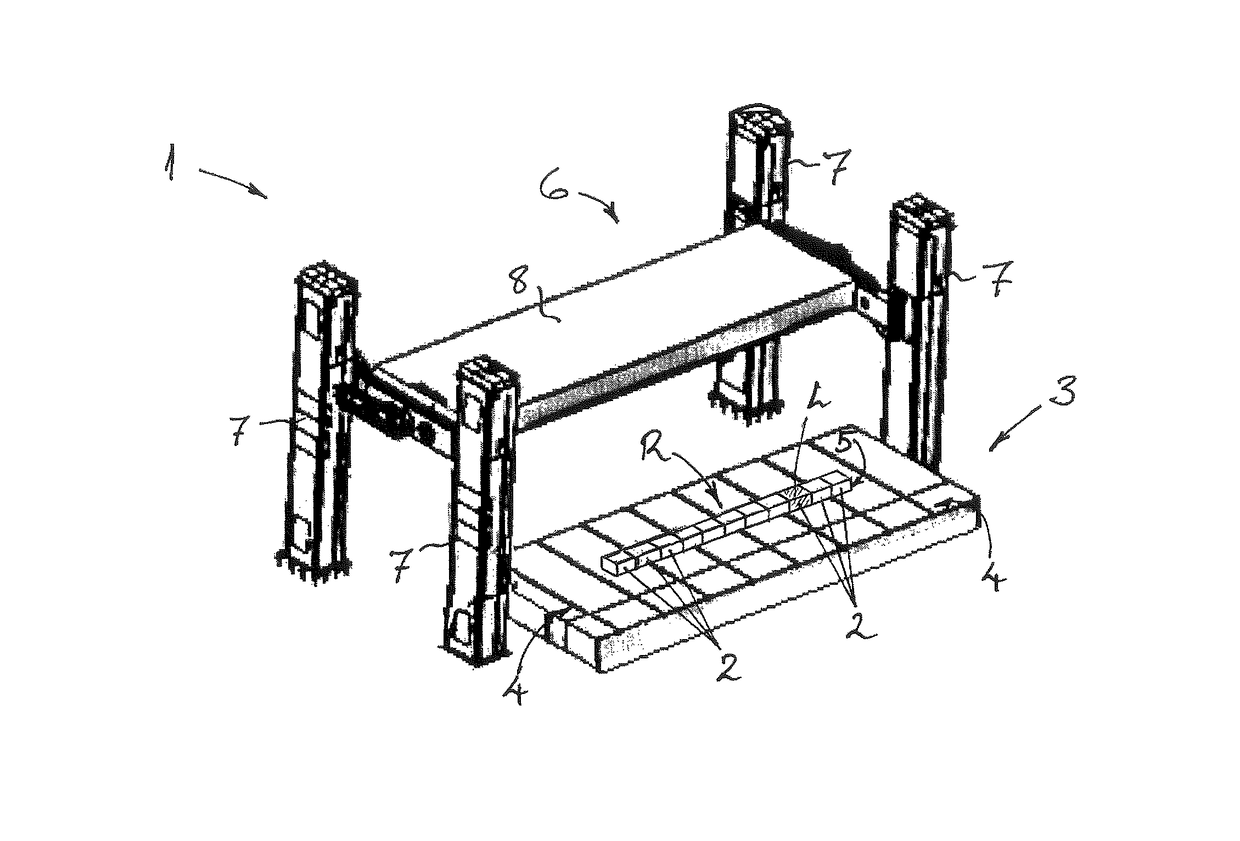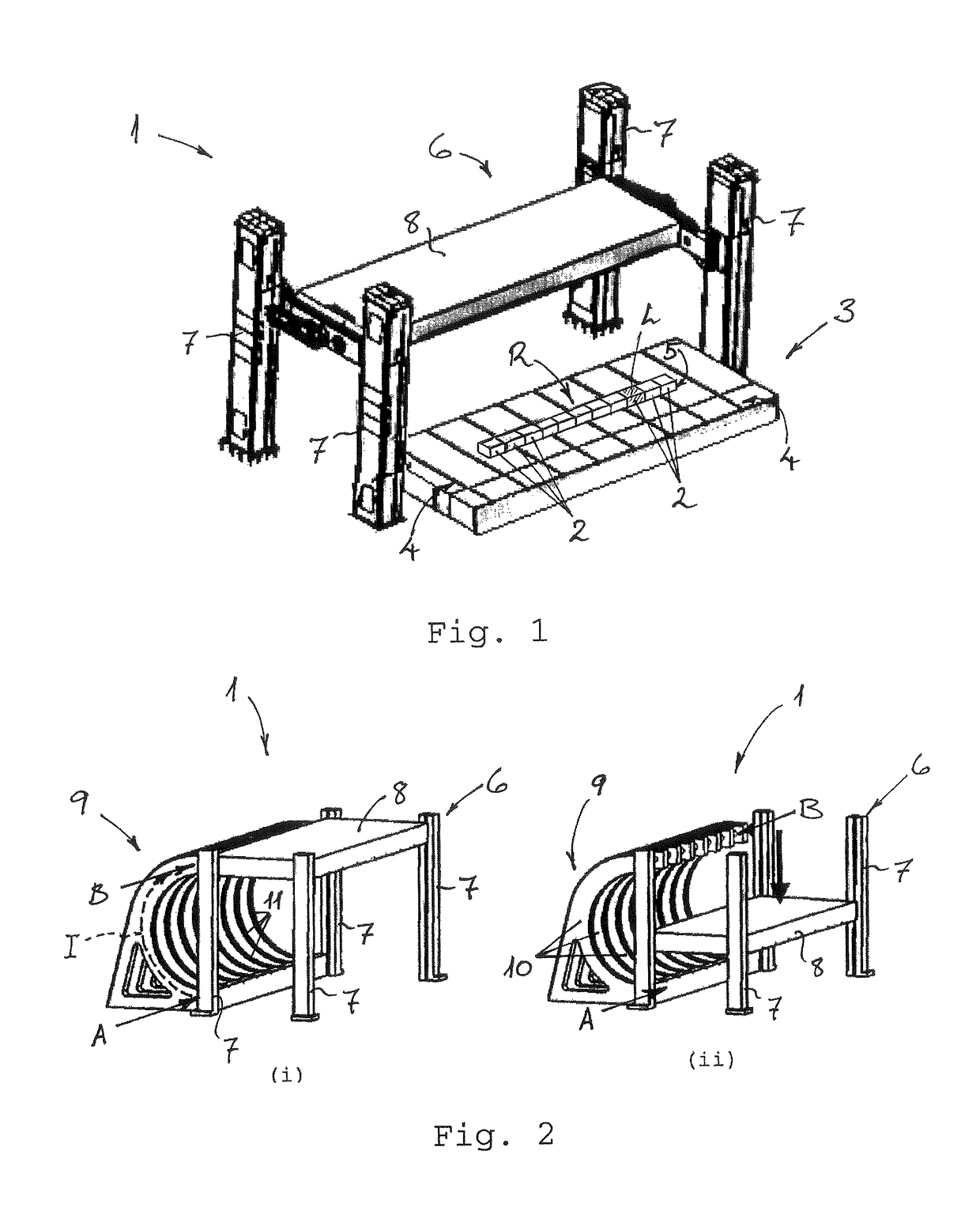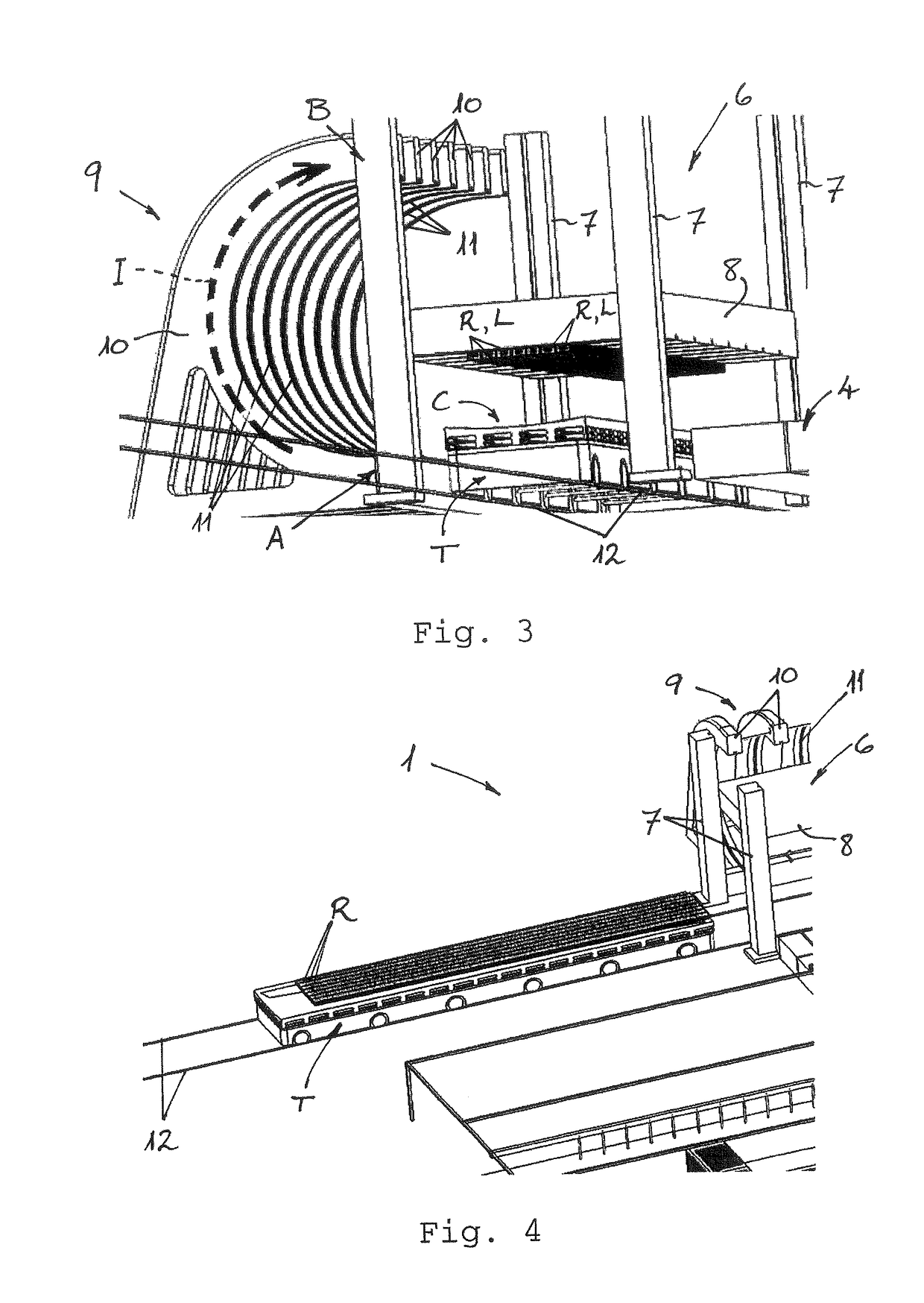System and method of manufacturing composite modules
a composite module and manufacturing method technology, applied in the field of system and a manufacturing method of fibre reinforced composite modules, can solve the problems of excessive production time and production bottle-necks, high cost, and high tooling requirements, and achieve the effect of faster and/or more automated production procedures
- Summary
- Abstract
- Description
- Claims
- Application Information
AI Technical Summary
Benefits of technology
Problems solved by technology
Method used
Image
Examples
Embodiment Construction
[0043]With reference to FIGS. 1 to 3 of the drawings, a system 1 for manufacturing a panel module P for an aircraft according to a preferred embodiment of the invention is illustrated schematically. The panel module P to be formed with this system 1 is comprised of a fibre-reinforced polymer, such as CFRP, and includes an integrated stiffening structure C with several elongate stiffening elements S, such as stringers, integrally formed on an inner side of an outer skin of the panel module P.
[0044]As will be understood by skilled persons, the panel skin or aerodynamic skin of the CFRP panel module takes its three-dimensional shape from an inner surface of a moulding tool T, which is laid-up with layers of reinforcing carbon fibers. These fibre layers may be dry fibre layers to be impregnated with resin in a resin transfer moulding (RTM) process, such as vacuum-assisted resin transfer moulding (VARTM), and then subsequently cured in an oven or autoclave, as is known in the art. Altern...
PUM
| Property | Measurement | Unit |
|---|---|---|
| mass | aaaaa | aaaaa |
| mass | aaaaa | aaaaa |
| mass | aaaaa | aaaaa |
Abstract
Description
Claims
Application Information
 Login to View More
Login to View More - R&D
- Intellectual Property
- Life Sciences
- Materials
- Tech Scout
- Unparalleled Data Quality
- Higher Quality Content
- 60% Fewer Hallucinations
Browse by: Latest US Patents, China's latest patents, Technical Efficacy Thesaurus, Application Domain, Technology Topic, Popular Technical Reports.
© 2025 PatSnap. All rights reserved.Legal|Privacy policy|Modern Slavery Act Transparency Statement|Sitemap|About US| Contact US: help@patsnap.com



